This paper was presented at the WCRR2006 (World Congres on Railway Research 2006)
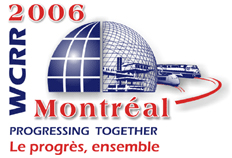
Andrea Gatti, Fulvio Monfardini Trenitalia S.p.a. Direzione Ingegneria, Sicurezza e Qualità di Sistema – Firenze, Italy
Introduction
Starting to the experience derived from the Traincom, Euromain and Fifth research projects, Trenitalia start an exploitation program of the broadband bi-directional services at train level. The paper shows the several point of view that had been considered to transform a research project into a real service.
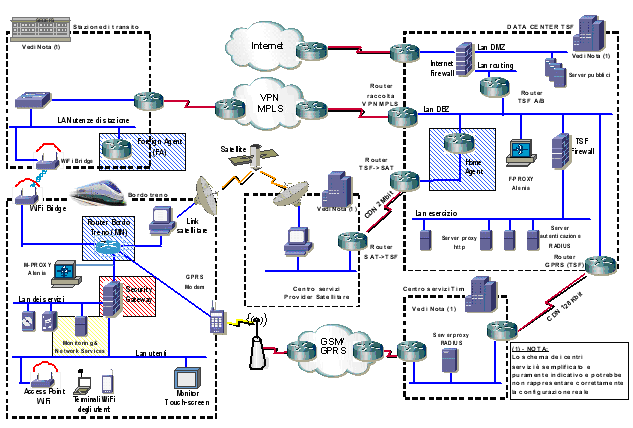
Train architecture
The ETR500 is an open train, the normal configuration is based on two locomotives and 11 coaches (4-1st class, 1 restaurant, 6-2nd class). The core of the Vector configuration is the 1st class special coach that hosts the servers, the satellite and the wireless interface. The configuration of the train to ground connection allows to switch between the several kind of interface according to the availability. The two key components for train to ground connection are the Alenia’s system derived from the Fifth project and the Cisco 3200 Series Wireless and Mobile router. The compound offers a wireless, ruggedized, high-performance system designed to be adapted to customer requirements, and deployed in environments for which traditional networking equipment is not suited.
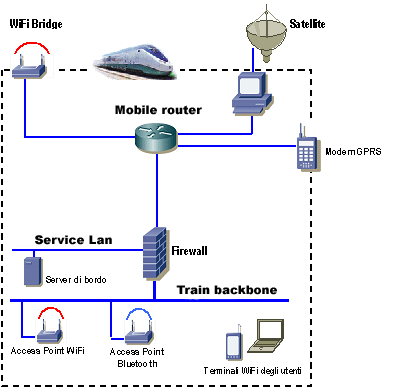
The train network is based on a double Fiber Optic backbone with an exceeding ISO/IEC category 7/class F specifications copper cross connection inside every coaches for fault-recovery purpose. All components and devices requires to fulfill the fire behavior and safety requirements stated by the Technical Specification for Interoperability for high speed train.
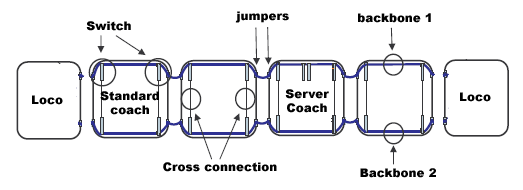
Vehicle’s architecture
Power supply
The train can be considered as a very huge mobile device environment. The power management of that train system requires special attention: the characteristics and the behaviour of the main line voltage, the safety requirements for on-board facility drive to build an independent power supply system dedicated to the Vector system.
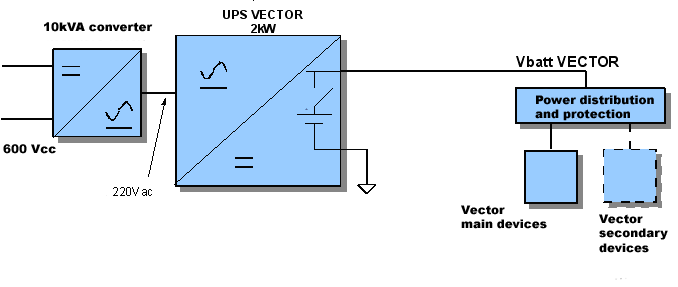
The system is built to preserve full operational capability for at least 15 minutes without the presence of the main line voltage. The Vector devices are powered at the battery voltage and provided by a dedicated circuit breaker.
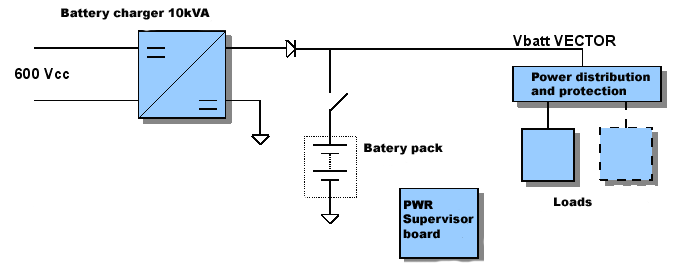
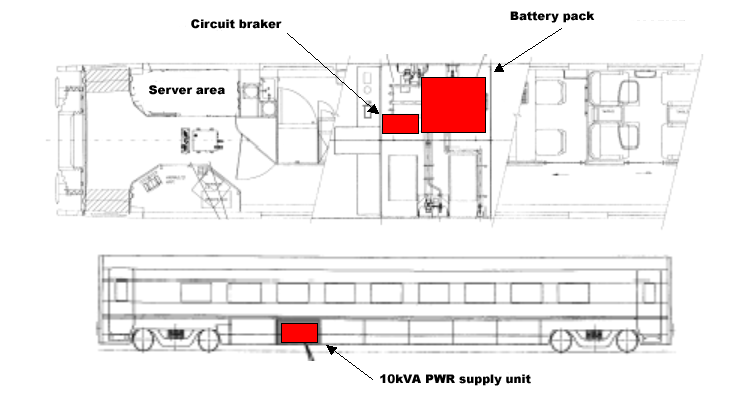
Network topology
The standard coach is equipped by two Layer 2 switch and three Access Point Wi-Fi 802.11g; the bluetooth coverage is also available for staff services only. The backbone is based on Gigabit Ethernet over fiber and the vehicle network uses copper cable exceeding ISO/IEC category 7/class F specifications.
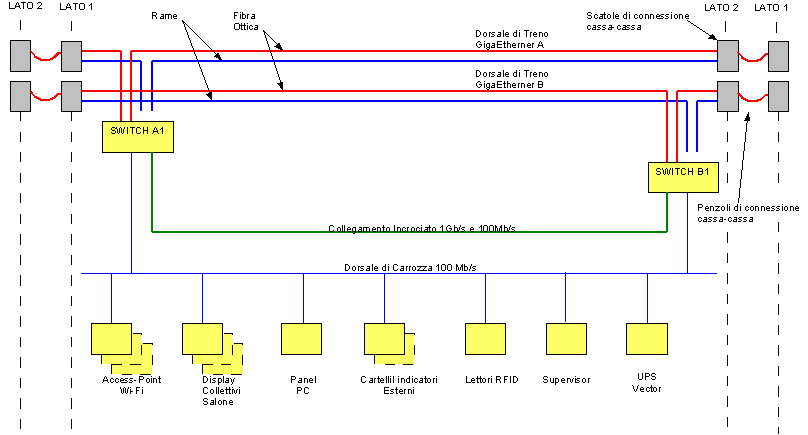
On the Server coach are installed the same basic devices of a standard coach and the core of the Vector system (servers, satellite interface and antenna, Cisco Mobile router, etc) as illustrated in Figure 8
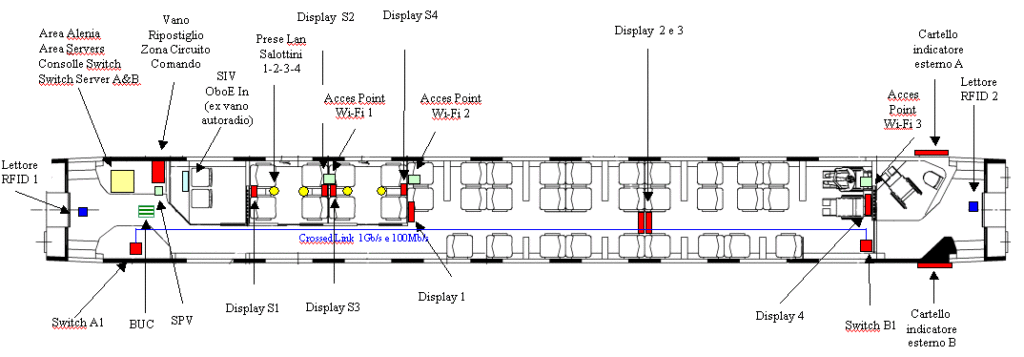
All core devices are installed, rack mounted, inside the server area. The ETR500 configuration and the bandwidth requirements force to concentrate that devices. The standard coaches do not host devices able to manage services or contents. In order to provide path redundancy, we use the coach cross link to close the path in case of failure and the classic Spanning-Tree Protocol. The services are distributed to the passenger personal devices using Wi-Fi access point distributed along the whole train. Following the first step in network configuration we recognized that the classic Spanning-Tree Protocol approach don’t suit the train network topology; as second sep we are investigating the Ethernet Aggregation over Fiber [1], [2] in order to avoid the side effect of the Spanning-Tree Protocol.
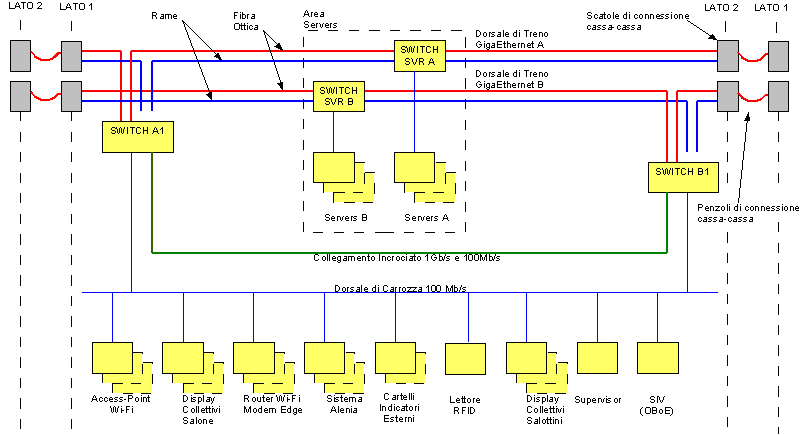
Content management and distribution
The solution provided allows to distribute multimedia contents that could be updated on real-time basis either during the trip or in stand-still condition of the train. The architecture can manage contents according either free distribution policy or applying billing policy.
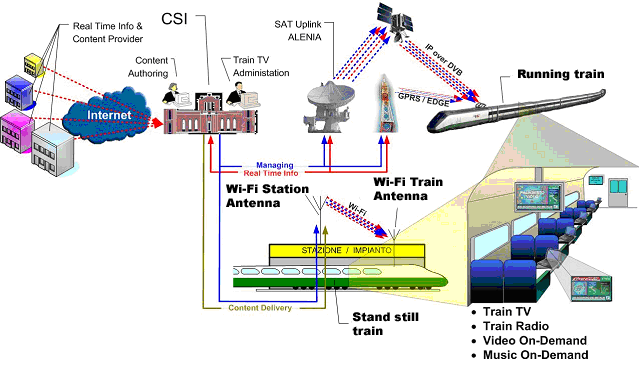
The Figure 10 show the main architectural components: a Central Content Management and Authoring Centre, 3rd party Content Provider, the several network components (Wired, SAT, GPRS, EDGE, UMTS, Wi-Fi, WiMax), the running trains and the standstill trains involved.
Acknowledgements
We want to present our credits to the whole Trenitalia Vector team and the TSF staff for the very valuable support during the development of the project. A special thanks to Mr. M. Sonnoli of the Trenitalia Vector team.
References
[1] Ethernet Aggregation over Fiber White Paper – 2002 MRV communication Inc.
[2] Fast EtherChannel White Paper –1997 Cisco Systems, Inc.
